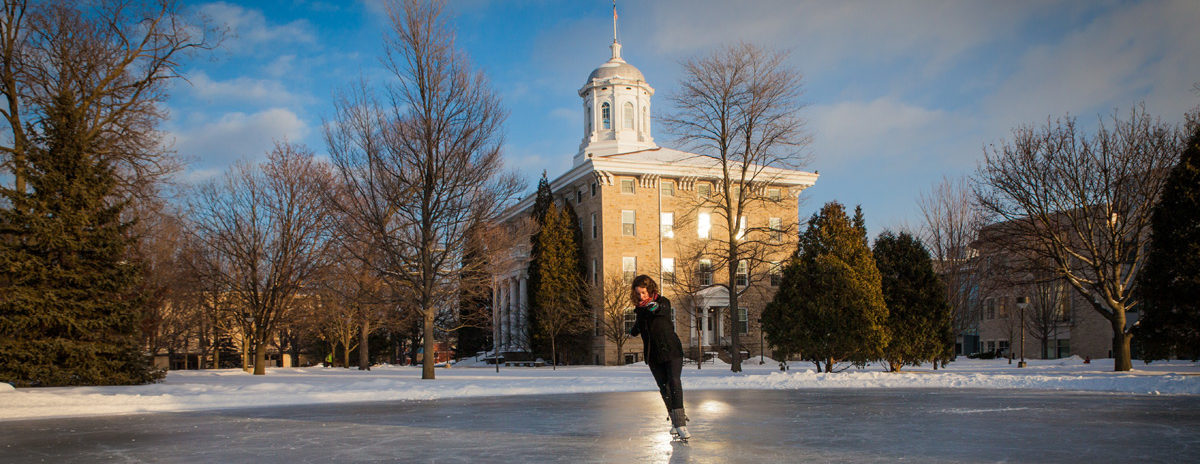Yesterday, we left you with a cliffhanger. Today, the start of an answer.
It has always been the particular challenge of a liberal arts and sciences program to answer the question “What can you do with it?” The question has become increasingly pointed in an economy that continues continues to sputter, joblessness remains woefully high, and, college costs continue to rise. The problem has been exacerbated by legislators (Democrats and Republicans alike) that often equate “college education” with “professional preparation”. The Obama administration’s drive to put the United States back on top of the list of nations with the highest percentages of college degree holders by 2020 illustrates this. (We’re not even in the top 10, according to the Organization for Economic and Cooperative Development.)
But there’s more to college education and professional preparation than just holding a degree.
It is necessary to have a well-trained, technically proficient citizenry. We need engineers, scientists, accountants, developers and others who can solve problems. But we also need people in these professions to be able to explain to others how they solved the problems. More important they need to teach others how to solve them for themselves. Purely vocational training likely will not get you all the way there. Strong writing, speaking and thinking skills can separate the merely good problem-solver from the great ones.
But limiting the discussion to the world of work is only part of the story. What of our lives outside our jobs?
What about being an informed citizen, one who can say not only what she believes, but make a compelling case for why she believes it?
What about being a critical consumer of information, one who is less likely to believe something just because it’s coming from an “authority,” like a newspaper, a news program, a blog, a politician, or even a professor.
The liberal arts and sciences can play an important role in developing the whole person—professionally and personally.
In a landmark study, Academically Adrift: Limited Learning on College Campuses (University of Chicago Press, 2011), Richard Arum and Josipa Roksa attempt to address a variety of questions about the amount and type of learning occurring in American colleges, based on a five-year longitudinal study of 2,300 students on 24 diverse campuses. One of the questions they address—are students improving their critical thinking, complex reasoning, and writing skills during college?—finds a positive correlation between academic rigor and the amount of gains seen in the development of this set of skills. Their Collegiate Learning Assessment (CLA) used performance tasks and holistic assessments (instead of surveys) to measure not only what students know, but what they don’t know.
In the study, students in the liberal arts and sciences fared far better than their peers in professional programs like business, engineering, communications, education and health. One of their hypotheses, according to Arum at a recent address to more than 100 college enrollment officials, is that the traditional arts and sciences is where the most academic rigor and, as a result, the most learning occurs, largely because of their heavier requirements for reading, writing, and intensive study—three activities that tend to be more independent endeavors. The study finds that students who spent, on average, more hours of independent study per week during college fared far better than those who spent, on average more hours in group study with peers during their college careers.
An interesting side note to the study is that those students who spent more time studying independently were also far more likely to read print or online news daily, and to discuss politics and public affairs.
So back to that question: “What can you do with the liberal arts and sciences?”
In an uncertain world, where the commonplace idea is that the most in-demand jobs ten years from now don’t yet exist, being a nimble, flexible, adaptive learner equipped with finely tuned reading, writing, speaking and thinking skills can be advantageous. A liberal arts and sciences curriculum can prepare you for your first job (though vocational experiences like internships will undoubtedly enhance that preparation). Perhaps more important, a liberal arts and sciences curriculum should prepare you for all of the jobs you’ll have after that.
And lest we pigeonhole ourselves merely as workers, a liberal arts and sciences curriculum can broaden the skills essential to a meaningful life outside the world of work. Such as being able to detect when a “man is talking rot.”
Or, as Andrew Delbanco, cultural critic and author of College: What it Was, Is, and Should Be, said in an address in 2012: “You’re going to spend the rest of your life inside your head. You may as well make it an interesting place to be.”


